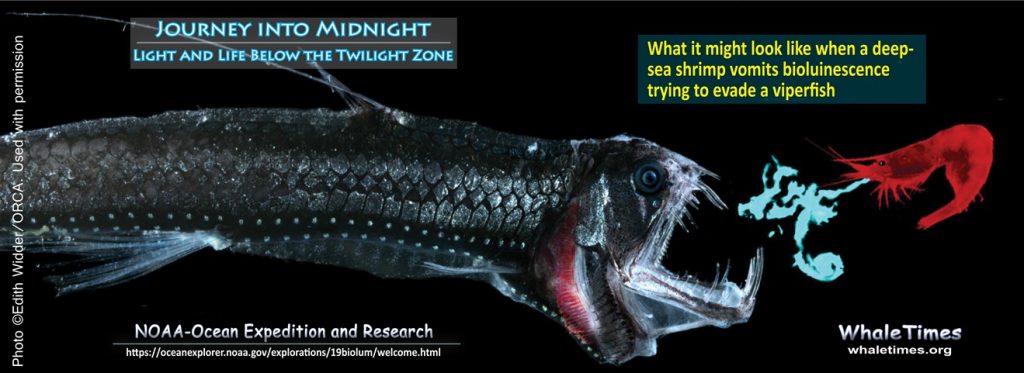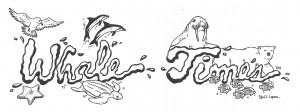Gulf of Mexico, Wednesday, June 19, 2019: Dr. Edith Widder and Nathan Robinson called out into the deep to see what would answer. Something did, in a very big way. A GIANT SQUID!
This is only the second time a living giant squid has ever been caught on camera. And both times the videographer was Dr. Edith Widder. Both times Dr. Widder’s special deep-sea camera system, called the Medusa, did what no ROV or submersible has been able to do.
The Medusa is a stealth camera system that captures video footage in the deep. Because the Medusa uses red lights that are invisible to most deep-sea inhabitants and has no noise-generating thrusters, it can serve as a stealthy observer of light and life below the twilight zone. (It’s design is to be unobtrusive, unlike an ROV or submersible.)
How do you call a squid? Lights. In the deep, most animals use light. Animals use bioluminescence to find food, communicate, and escape danger. The lights on the Medusa recreate the alarm lights of an atolla jellyfish. When startled, this jellyfish puts on a light show that beats anything in Vegas. Scientists believe the light show, like a car alarm, catches the attention of other predators. If the jellyfish is lucky, a larger predator will swoop in and eat whatever was trying to eat it. That allows the atolla jellyfish to slip away into the dark.
The Medusa uses specially designed lights that mimic the color and pattern of the atolla’s glowing scream for help.
Science Team member and cephalopod expert, Dr. Heather Judkins (University of South Florida St. Petersburg) quickly identified it as a giant squid — a 10-12 foot long juvenile giant squid.
This exciting discovery, and the on-going research in the Gulf of Mexico midnight zone (below 1,000 meters/3,280 feet) are part of the “Journey into Midnight: Light and Life Below the Twilight Zone” research cruise funded by NOAA’s Office of Exploration and Research.
Read more about this exciting news: Here Be Monsters: We Filmed a Giant Squid in America’s Backyard
K-6 teachers, join WhaleTimes’ this fall for Creep into the Deep: Journey into Midnight and learn more about Dr. Widder (aka the Squid Whisperer), Dr. Judkins…and the rest of this amazing research team and their discoveries in the Gulf of Mexico. Find out more.
Creep into the Deep: Journey into Midnight education program and the Journey into Midnight: Light and Life Below the Twilight Zone research sponsored by NOAA-OER
 Our Journey into Midnight: Light and Life Below the Twilight Zone Virtual Research Mission has begun!
Our Journey into Midnight: Light and Life Below the Twilight Zone Virtual Research Mission has begun!





